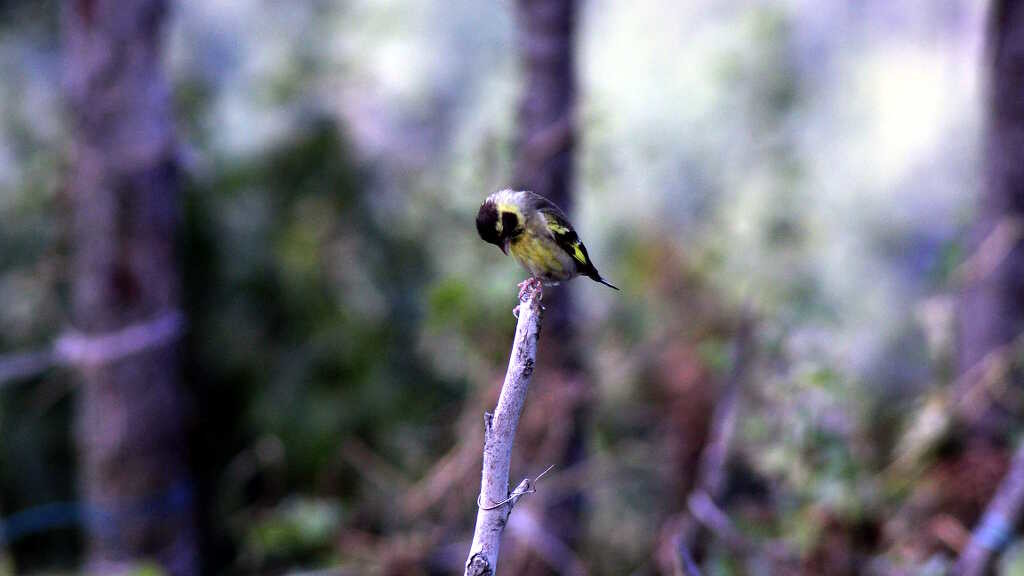
Carduelis spinoides ( Yellow- breasted greenfinch)
Carduelis spinoides, also known as the Yellow-breasted Greenfinch, is a vibrant and distinctive bird found in the Great Himalayan National Park (GHNP). This finch, characterized by its bright yellow breast and olive-green plumage, is a striking addition to the park’s diverse bird species. The Yellow-breasted Greenfinch is commonly found in wooded areas and scrublands within the park, particularly at higher altitudes. It is most active during the daytime when it forages for food, often seen in small groups.
Habitat and Distribution in GHNP
In the Great Himalayan National Park, the Yellow-breasted Greenfinch is primarily found in subtropical and temperate forests, where it favors areas with dense shrubs, open woodlands, and grassy meadows. The bird is typically spotted at elevations between 1,500 and 3,000 meters, where it thrives in the park’s rich, undisturbed ecosystems.
This species can be seen flitting through the Tirthan Valley and Sainj Valley, where its vibrant colors contrast beautifully against the lush green backdrop. The Yellow-breasted Greenfinch is more commonly found in the park’s more secluded and dense forest areas, which provide ample cover for feeding and nesting.
| Common name | Yellow-breasted Greenfinch |
| Scientific name | Carduelis spinoides |
| Family | Fringillinae |
| Description | Yellow supercilium and underparts, dark ear-coverts and malar stripe, and yellow patches on wing. Juvenile heavily streaked.it is a resident bird of Himalayas. It breeds (1800-3300m) in winter and migrate below 1500m. |
Behavior and Diet
The Yellow-breasted Greenfinch feeds primarily on seeds, berries, and insects. It has a preference for seeds from a variety of plants, including grasses and shrubs that are abundant in the GHNP. This finch uses its strong beak to crack open seeds and is often seen hopping between plants and shrubs while foraging.
During the breeding season, the Yellow-breasted Greenfinch forms small flocks, though it is generally more solitary outside of this time. Its cheerful chirping and vibrant plumage make it easy to spot as it flits through the underbrush and low branches.
Conservation Significance
While the Yellow-breasted Greenfinch is not currently threatened, it depends on the health of its forested habitat. Conservation efforts in the Great Himalayan National Park are essential to maintaining the park’s ecosystems, ensuring that species like the Yellow-breasted Greenfinch continue to thrive in the region.



